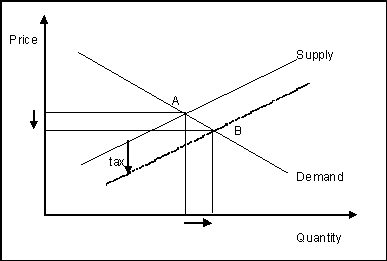Why have GST on food?
The issue of GST on food is once more gaining traction amongst various political parties and social groups. New Zealand’s system of GST is one of the best in the world because it has only one tax rate and that rate applies to almost everything. We do not have the absurd situation that exists in some countries where, for example, bread has no GST, chicken has no GST, but a chicken sandwich does have GST. Or the situation where the chicken sandwich attracts GST if it is served warm, but not if it is served cold.
Policy makers in New Zealand wisely decided that the administrative and compliance costs of having selected goods and services exempt from GST would be too high.
While the current focus is on food, when GST was being designed there was as much opposition to GST on other basic goods and services such as energy and medical care. Educators opined that GST on books would inhibit learning while producers of sporting goods suggested that GST on their products would discourage exercise and make us all less healthy. You can be sure if that if GST on food is ever removed, other calls for exemptions will soon follow.
Another reason for levying GST on as wide a range of goods and services as possible is that the wider the tax base, the lower rate of tax required for any given amount of tax revenue. Removing GST on all food would imply that GST on other goods and services would need to rise to realise the same amount of revenue. This would strengthen calls for its removal on other basic goods and services. The GST system would become progressively more complicated and more open to cheating and avoidance. So why not get rid of GST completely?
If there was no GST income tax rates would undoubtedly have to be higher. The higher a tax, the greater the incentive to avoid it and the more distortions it creates in the economy. The main reason for GST being introduced in the first place was to enable government to obtain tax revenue in a more efficient manner – more efficient in terms of lower compliance costs, and in terms of fewer economic decisions (such as what to buy or invest in) being determined largely by their tax implications. GST is harder to avoid than income tax.
Many people believe that by removing GST on food, food prices will drop by the full extent of the tax. There are three reasons why this would not happen.
- The diagram shows the standard demand and supply curves familiar to any secondary school economics student. As prices fall demand rises, so the demand curve slopes down. The supply curve slopes upward because higher prices make it more profitable to produce.

Removing a commodity tax such as GST is akin to a shift in the supply curve. As far as consumers can tell, prices fall for any given quantity supplied. The market moves from A to B. Note though, that while the price paid by consumers falls, it does not fall by the full amount of the tax. The extent of the fall depends on the slopes of the curves.
- GST could be removed from the price paid by the consumer, but it would still exist on the prices of goods and services bought by food producers. Even the last link in the product chain – the supermarket or green grocer – would still be paying GST on their inputs. So although they wouldn’t charge GST on food sold to final consumers, they would still have to recover the cost of the GST that they pay on their inputs. Thus the price reduction to the consumer would be very small. The government could reimburse all GST paid by sellers (making them zero-rated rather than GST- exempt), but while this would generate a bigger price reduction, it would be even more expensive, to say nothing of greater opportunities to cheat the system.
- Even if there is some reduction in food prices, there would be nothing to stop food retailers from rebalancing prices, in effect taking some of the potential price reduction in food prices and applying it to other products instead. This becomes more likely when 'food’ actually has to be defined. Does wine count? What about fast food?
So a broad based GST is a good idea for reasons of economic efficiency, compliance costs and avoidance potential. Furthermore, removing GST on food is unlikely to generate much of a price reduction. That leaves the anti-GST on food lobbies with only one argument; that GST on food makes people less likely to have a healthy diet as they cannot afford good food. (Whether a diet based on good food is actually more expensive than one based on bad food is highly doubtful, but that is beyond the scope of this article.)
There are two issues here – poverty and choice. When GST was introduced income taxes and benefit rates were adjusted to ensure that consumers were not made worse off. Indeed, even if the offsets were exactly one for one, the fact that the economy as a whole has a better tax system means that its growth should be higher, ultimately translating into a higher standard of living. Having said that though, if high food prices are of concern, the best means of immediate help is via lower income taxes, not abolishing GST on food. Lower income taxes gives consumers more choice about how they allocate their tax cut between food and other goods and services.
Removing GST on food may look like assistance to cash-strapped consumers, but in the long term we will all feel the adverse effects of a less efficient tax system.